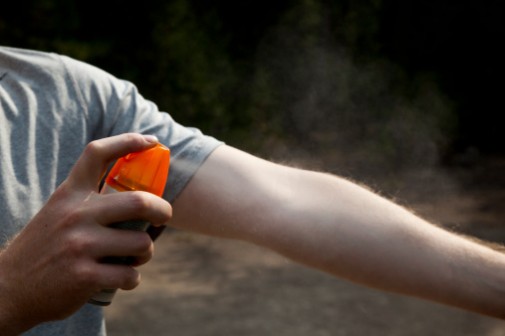Bug sprays getting label facelift

Summer is the season where bug bites seem to go from one to 100. Even using protections like bug spray, wearing long sleeve clothing, and burning insect repellant candles, it never seems to be enough to keep pesky bugs away.
Instead of looking for new approaches to stay clear of bugs, the U.S. Environmental Protection Agency (EPA) believes we should work on improving the tactics we have now.
A new graphic for bug repellant labels will show consumers how many hours the product will protect against mosquitoes, ticks or other bugs. The EPA’s assistant administrator of the office of Chemical Safety and Pollution Prevention, Jim Jones, said in a statement, “We are working to create a system that does for bug repellents what SPF (sun-protection factor) labeling did for sunscreens.”
The use of this new graphic is not mandatory, but companies who want to use this picture send in an application that includes test results verifying how long their product works. This graphic applies to products put directly on to the skin and consumers could start seeing these labels on the shelves as early as next year.
Experts say the labels on bug repellant right now aren’t doing a sufficient job of informing consumers. The labels lack information on how long the bug spray will last, how often you should re- apply and which insects a product protects against.
Jones also said that “by providing vital information to consumers, this new graphic will help parents, hikers and the general public better protect themselves and their families from serious health threats caused by mosquitoes and ticks. We are encouraging manufacturers to submit applications so they can add the graphic to their registered repellent products.”
Dr. Thomas Sutter, an occupational health physician with Advocate Medical Group in Bloomington, Ill., urges summer campers and travelers to make sure they are taking precautions to protect themselves from mosquitos and other bugs.
Dr. Sutter says to keep these tips in mind:
- Cover exposed skin.
- Use an appropriate insect repellent.
- Use permethrin-treated clothing and gear (such as boots, pants, socks, and tents.
- Stay and sleep under in air-conditioned or screened rooms.
- Use a bed net if sleeping area is exposed to the outdoors.
Related Posts
Comments
One Comment
About the Author
health enews staff is a group of experienced writers from our Advocate Health Care and Aurora Health Care sites, which also includes freelance or intern writers.


















This will be helpful. Now if they can just do something about the smell!